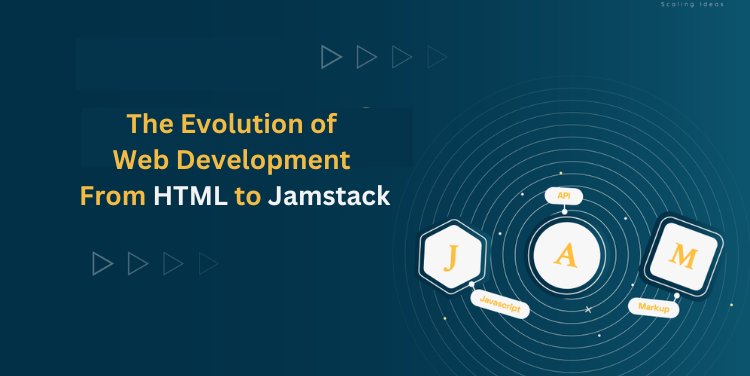The Evolution of Web Development: From HTML to Jamstack

In the ever-evolving landscape of web development, the journey from the humble beginnings of HTML to the cutting-edge technologies of Jamstack has been nothing short of transformative. The evolution has been driven by the need for faster, more scalable, and efficient web applications. Let's embark on a journey through time, exploring the key milestones that have shaped the world of web development.
-
HTML and Static Websites: The early days of web development were marked by the simplicity of HyperText Markup Language (HTML). Developers crafted static websites with plain HTML, where each page had its own HTML file. While this approach was straightforward, it lacked dynamism and interactivity.
-
Introduction of CSS and Dynamic Content: The introduction of Cascading Style Sheets (CSS) allowed developers to separate the structure (HTML) from the presentation (CSS) of a website. As a result, websites became more visually appealing. Simultaneously, server-side scripting languages like PHP and ASP enabled the generation of dynamic content, paving the way for more interactive websites.
-
Rise of JavaScript and AJAX: The advent of JavaScript revolutionized web development by enabling client-side scripting. This allowed developers to create more responsive and dynamic user interfaces. Asynchronous JavaScript and XML (AJAX) further enhanced the user experience by enabling seamless data exchange between the client and server, without requiring a page reload.
-
Emergence of Content Management Systems (CMS): As web applications became more complex, the need for efficient content management led to the rise of CMS platforms like WordPress, Joomla, and Drupal. These systems allowed non-developers to manage website content easily, ushering in an era of more accessible web development.
-
Move to Single-Page Applications (SPA): The demand for faster, more interactive web experiences led to the rise of Single-Page Applications (SPAs). Frameworks like Angular, React, and Vue.js gained popularity, allowing developers to build dynamic web applications that could update content without reloading the entire page.
-
The Era of Jamstack: Jamstack (JavaScript, APIs, and Markup) emerged as a paradigm shift in web development. This architecture decouples the frontend from the backend, relying on APIs to fetch data and pre-rendering content. With the use of static site generators like Gatsby and Next.js, Jamstack provides enhanced performance, security, and scalability.
-
Serverless Architecture: The move towards serverless architecture, where developers deploy functions as individual units, further streamlines the development process. Services like AWS Lambda and Azure Functions allow developers to focus on building features without worrying about server management.
The evolution of web development from the static HTML pages of the past to the dynamic and scalable Jamstack architecture represents a journey fueled by innovation and a quest for better user experiences. As technology continues to advance, web developers can anticipate further breakthroughs that will shape the future of the digital landscape. Embracing these changes ensures that developers stay at the forefront of an ever-evolving field, delivering cutting-edge solutions to meet the demands of tomorrow.
What's Your Reaction?















